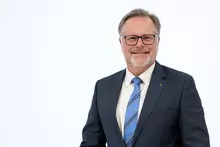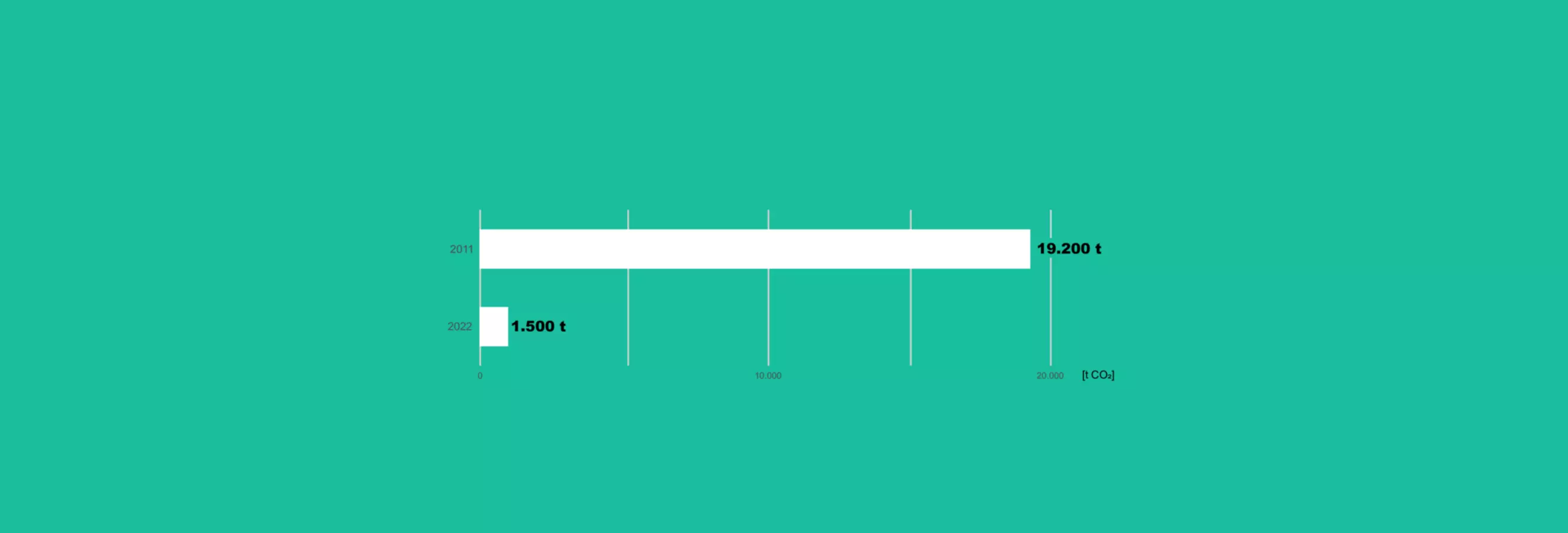
Dr. Kurt D. Bettenhausen
Position: Board Member New Technologies & Development
- Company: HARTING Technology Group
tec.news: What aspects does HARTING`s environmental strategy cover? And since when has the strategy been lived?
K. D. Bettenhausen: Since the beginning of the 1990s, which is more than 30 years ago, an environmental strategy has been anchored at HARTING and since then has also been a lived requirement stipulated by our shareholders. We focus all our actions on sustainability, and we do not allow any waste. At the end of the day, this is exactly the sustainability we see in our use of raw materials and the materials we process .

Dr. Kurt D. Bettenhausen
tec.news: How does sustainability influence processes at HARTING?
K. D. Bettenhausen: First of all, we try to make our processes as lean as possible - from the customer to the customer - so that waste of any kind is avoided along the way. Moreover, there are then framework conditions within the individual process steps that have to be adhered to - for example, in the selection of materials, in the selection of standards. Our thinking and acting in terms of the Product Carbon Footprint (PCF) includes considering the use of alternative energy sources, constantly reviewing materials to see how they can be processed, and fundamentally finding ways to precisely influence the value chain - also outside of our own company, in upstream and downstream processes. On the one hand, this concretisation is a gigantic task, but on the other hand it is also necessary in order to identify precisely those areas which still may hold hidden potential. This concrete processing leads to tapping these hidden potentials.
tec.news: How do you see the interplay between the product carbon footprint and corporate
carbon footprint?
K. D. Bettenhausen: Breaking it down to the product level (PCF) is the natural progression of what we were already doing on our own in terms of the Corporate Carbon Footprint. This is certainly also because the requirements of the markets have changed - even if this still varies in extent and characteristics worldwide and a great deal depends on the development levels of the respective regions and international political agreements. It simply makes sense to think from customer to customer and to provide this step with the smallest footprint as possible. And that can only be done by detailing right down to the product level.
tec.news: How does sustainability influence the different roadmaps?
K. D. Bettenhausen:
At HARTING, we are basically working with seven interlinked roadmaps. The main ones we look at here are products (market-driven), innovation (technology-driven), product technology in implementation and production technology. These four roadmaps must mesh and interlock in order to produce and further develop sustainable products as efficiently as possible. We have been doing this for more than 65 years, ever since the inception of our Han® connectors. As this example shows, sustainability also manifests itself when high-quality products on the market are characterised by very long service lives, do not need to be replaced and thrown away, and function even under the most demanding and harshest conditions.
At HARTING, we opt for standard materials with regard to many of the materials we rely on. We deliberately do not work with different combinations of materials where the consequences cannot be clearly assessed. For us, new design methods automatically trigger structural optimisations for successor product generations. In other words: we take a close look at how we develop other topologies of the respective enclosures using 3D printing, for example. We are investigating in what way a lightweight connector also simultaneously results in a lower PCF of a system in which it is installed.
With intelligent connectors, which we have already showcased elsewhere, we are working on being able to measure data and signals as well as register environmental influences. We are pursuing the goal of being able to make a condition determination within the product life cycle. And for the following reason: Maintenance work and product replacements are carried out according to fixed cycles given that our products for demanding applications are exposed to high environmental stresses - shock, vibration, temperature, humidity in outdoor applications in the different climatic regions of the world. By being able to provide condition information and determine that the product is still in good and proper working order after a maintenance cycle, we succeed in making another important contribution to sustainability: our products remain in the field longer and are consequently more sustainable.
And finally, we are also focusing on the fundamental testing of new materials, such as mineral oil- free plastics, in order to start launching so-called "green product lines". However, the alternative production without mineral oils, based on naturally renewable raw materials faces a major challenge. Our products are on the job in regulated environments. This automatically means that we must ensure that we are still meeting all the requirements of any certifications and tests with a "green" replacement product. This applies to both the metallic and the plastic side of the materials.
In this area, we are involved in the relevant national and international research projects.
tec.news: In your opinion, what is the significance of the Digital Twin for determining a cradle-to-
grave PCF?
K. D. Bettenhausen: Any kind of information we need for ourselves - but also for our customers and partners - can only be provided reasonably and updated continuously if we are able to accompany everything digitally from start to finish. This means: starting from the design process in development all the way through to applications in the field. We can only do this with the support of Digital Twins. In this context, we distinguish - in terms of HARTING - three essential characteristics: We are users of Digital Twins, we are the creators and providers of Digital Twins* and we are the enablers of Digital Twins by enabling others to keep their Digital Twins up-to-date using our products.
*HARTING had made a total of 18,800 products available at HANNOVER MESSE 2023 as part of an Asset Administration Shell.
In order to be able to meet these objectives, first of all consortial and then consensual international standardisation will be necessary. The Asset Administration Shell (AAS) provides the framework for us to do this and serves as the foundation of a neutral platform that others can also use. For us, this means that we provide product information that extends far beyond geometric installation dimensions. We are playing an active role in shaping and designing the contents and driving the issue forward through active participation in the relevant committees. The AAS is the superimposed bracket so to speak and it will usher in the Digital Product Passport and offer the ideal opportunity to transport the PCF.
tec.news: How do you determine the Product Carbon Footprint?
Dr. Kurt D. Bettenhausen: Today, it is common practice to provide the PCF based on calculations. So we know which materials we use, with which basic values they are delivered and what our processing steps look like in terms of production - keyword: inbound logistics, outbound logistics. Based on this we can issue reasonable information. The short to medium term goal must be to actually be able to provide the information based on actual batch-based determination. This means, however, that there is a considerable difference between generating the same product overnight with green electricity and using an electricity mix that is available internationally. Or was self-generated solar power used at midday when the sun was at its zenith? The one industry that has a completely different framework in this respect, but is already quite far along, is the steel industry.
Today, statements can to a large extent already be made about which steel sheet from which batch actually entails which PCF. This means: not as steel sheet as such, but actually determined on a batch-specific basis. Naturally, this is a different matter for a simple sheet of metal than for a multitude of combined products, where the individual components also involve a certain complexity. But the journey is clearly going in this direction, and this is also specifically our declaration of intent: We aim to and will provide the PCF as soon as this is possible and feasible.
We, as a technology group, will provide the cradle-to-gate PCF that virtually ends at our door when we deliver the product to the customer. The AAS allows the PCF to be extended in the course of the product life cycle by the user, who in turn can continue to update the PCF in the same interoperable tool - right up to the point of product disposal, in other words: Cradle to Grave. And this is precisely the advantage of the Digital Twin.

Detlef Sieverdingbeck
Position: General Manager Corporate Communication & Branding
- Department: CCB
- Company: HARTING Stiftung & Co. KG
